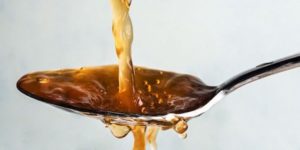In Indian traditions, Yajnya or Yagya or Homa is the Vedic science of purifying the atmosphere through fire. Yagya, when performed at a small scale in daily life i.e. at sunrise and sunset, are called Agnihotra, also stated as the healing fire in the ancient science of Ayurveda, and is a process of removal of toxic substances from the atmosphere through fire and Sanskrit mantras, inducing beneficial changes in atmosphere with fire prepared with specific organic materials, in synchronization with biorhythm of sunset and sunrise. The core aim of the Agnihotra system is “You heal the atmosphere and the healed atmosphere heals you”
How to perform agnihotra?
You need the following materials to perform agnihotra:
- Dried cow dung.
- A copper pyramid of a specified size and shape
- Ghee
- Grains of unpolished rice
To build agnihotra fire arrange the cow dung pieces in the copper pyramid in a way that good airflow is possible. Spread ghee on all the dung pieces and ignite it.
When we do the Mantras, the sounds we utter activates special vibrations that create a certain atmosphere effect. When you speak the Mantra into the Agnihotra pyramid at the time of the fire, the ash retains those vibrational energies. There is a different mantra for sunrise and sunset:
- Sunrise: “Surya Swaha” “Surya Idam Na Mama” “Prajapataye Swaha” “Prajapataye Idam Na Mama”
- Sunset: “Agnaya Swaha” “Agnaya Idam Na Mama” “Prajapataye Swaha” “Prajapataye Idam Na Mama”
At the exact timing for sunrise or sunset, utter the Mantra and give the offering of rice and ghee to the fire, after the word both the times Sváhá.
After the Mantras and rice offerings are given, do not to disturb the fire and if possible, avoid moving the pyramid until the next time you prepare for Agnihotra.
Benefits of agnihotra:
- Enhancing soil fertility: Application of Agnihotra ash to enhance soil fertility results in an increase in overall bacterial flora including nitrogen fixers and phosphate solubilizers, increase in the water holding capacity of the soil, and improved level of macronutrients and trace elements.
- Mitigating water pollution: It is observed that when water is treated with Agnihotra ash, there is a notable decrease in biological oxygen demand and microbial contamination along with solid content in water and hardness. Hence, the wastewater becomes portable and can be reused in fields (Abhang et al., 2015).
- Mitigating air pollution: The Agnihotra practices are known to purify air and have an adverse effect on the total microbial load of the air. It has been also reported that SO, NO, RSPM (Respirable X X Suspended Particulate Matter), and SPM (Suspended Particulate Matter) levels in the air were also considerably reduced by doing agnihotra as compared to the conditions without it.
- Holistic system for the development of plants: The Agnihotra vapors along with ash create a holistic system for plant development by stimulating root growth in the presence of light. Besides India, this potential of Agnihotra is being utilized in countries like Germany and Poland for organic farming. Plants grown in the Agnihotra environment are able to withstand drought more efficiently and cause modifications in the cellular structure of plants, which translocate more nutrients to fruits rather than leaves.



